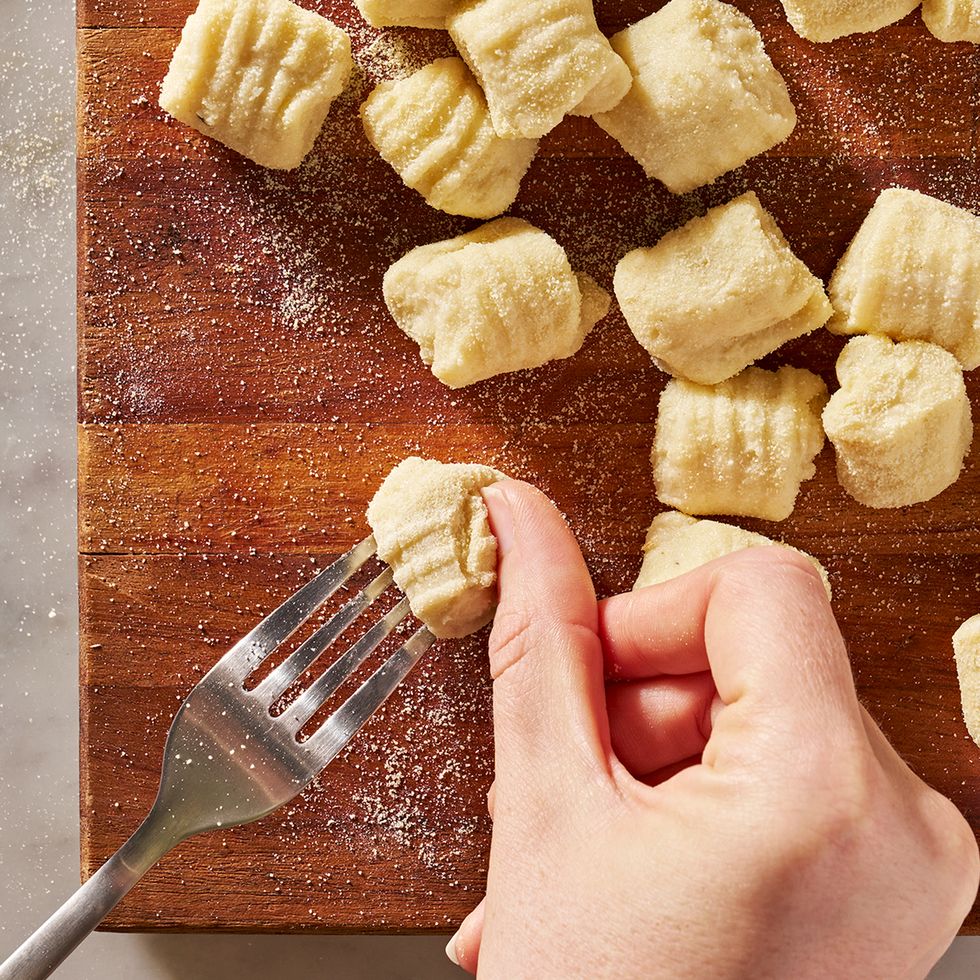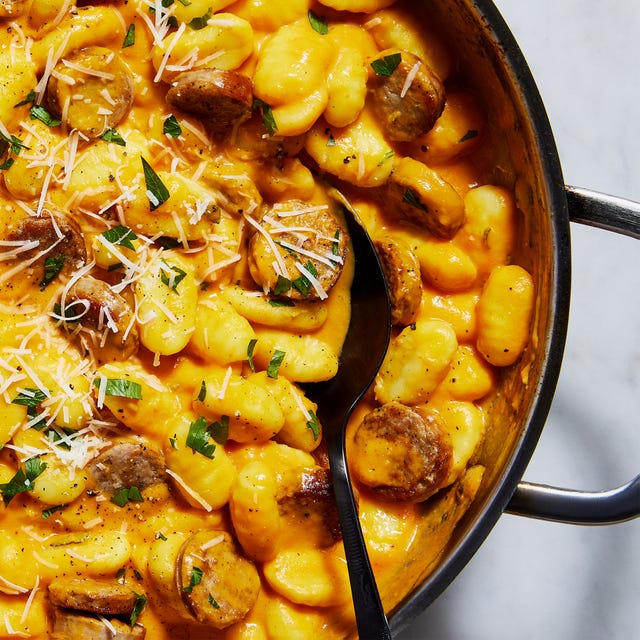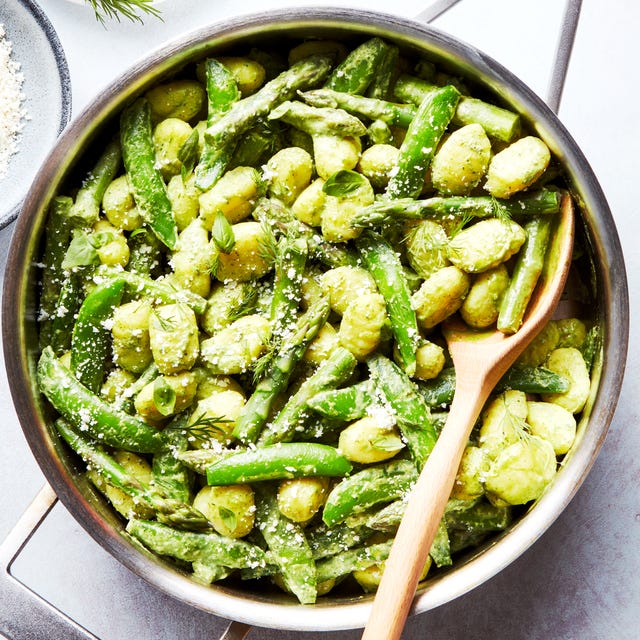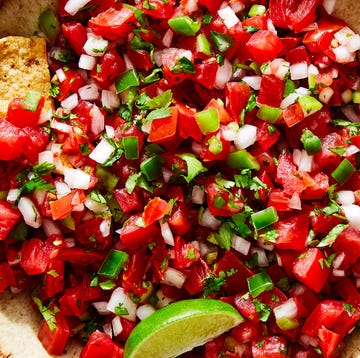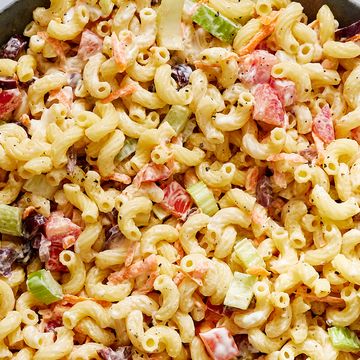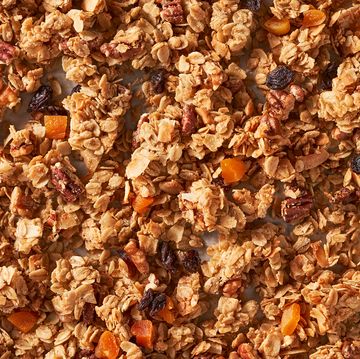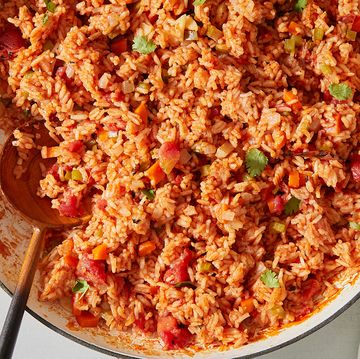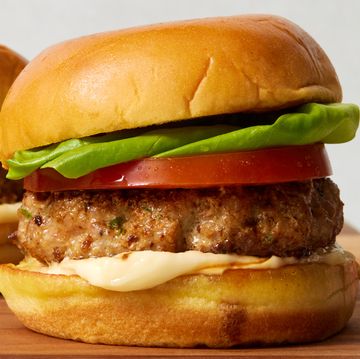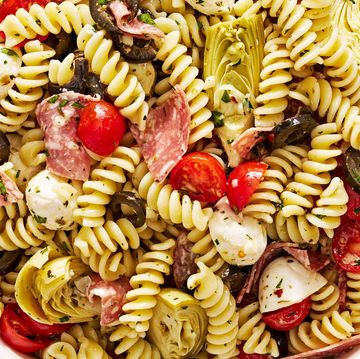If making homemade pasta seems like too much of a process, then I strongly recommend giving gnocchi a try. This rustic, dumpling-like pasta is easy to shape, requires no special equipment, and can be used in countless recipes and with an endless array of sauces. Roasting the potatoes occupies the bulk of the time in this recipe, but even that is hands-off. Seriously—if you’ve never made homemade pasta before, this is where you should start. Here’s everything you need to know:
How To Make Homemade Gnocchi
INGREDIENTS
- Potatoes: For soft, fluffy gnocchi, it’s important to use potatoes that are high in starch, low in moisture. Russets check those boxes, which is why they’re my go-to.
- Eggs: The eggs serve as a binder, tying the dough tougher and helping the gnocchi maintain their integrity when boiled.
- Flour: I use a minimum of all-purpose flour to keep the gnocchi light and tender while still giving them the structure they need to be shaped and to hold together during cooking.
STEP-BY-STEP INSTRUCTIONS
Start by roasting the potatoes. Prick the potatoes all over with a fork (to allow steam to escape) and roast them directly on your oven rack until tender throughout; an inserted paring knife should slide easily through the center of the potatoes. Expect about 1 hour for this; it’s best to err on the side of overcooking the potatoes. Set the potatoes aside until cool enough to handle.
Cut the potatoes in half and scoop the flesh into a medium bowl with a spoon; discard the skins. If you have a ricer, pass the potato flesh through the ricer and into a large bowl; otherwise, just mash the potatoes thoroughly with a fork and scrape into a large bowl. Add the eggs, all-purpose flour, and salt to the mashed potatoes and mix with a wooden spoon until a dough begins to come together.
Turn the dough out onto a clean work surface (do not dust with flour) knead until smooth and cohesive, about 3 minutes. The dough will feel a little dry and crumbly but try to resist the temptation to add more flour—the more flour you add, the tougher your gnocchi will be.
Time to shape the gnocchi! Dust a large rimmed baking sheet with an even layer of semolina flour to prevent sticking. Divide the dough into four even pieces. Working with one piece at a time, roll the dough into a 1/2"-thick rope, then cut into 1" pieces to form gnocchi. Transfer the gnocchi to the prepared baking sheet and toss gently to coat in semolina. If the dough becomes too soft to work with, sock it in the freezer for 10 minutes or so to firm up. Finally, roll each gnocchi over the tines of an upturned fork to create its signature ridges, then return to the baking sheet. Those ridges might seem like a mere aesthetic flourish, but they’re actually there to help the gnocchi hold onto sauce.
Now let’s cook those gnocchi. Bring a large pot of salted water to a boil. Working in batches cook the gnocchi until they float to the surface and appear slightly puffy and swollen, about 2 minutes. Using a slotted spoon or spider, transfer the gnocchi to your preferred sauce and toss to coat.
Full list of ingredients and directions can be found in the recipe below.
Recipe Tips
- How do you cook gnocchi? Gnocchi is often boiled, just like pasta. It only takes a couple of minutes, and you’ll know they’re done when the gnocchi floats to the top. Boiling gnocchi gives you pillowy soft dumplings, but you can also pan-fry gnocchi. This also only takes a couple of minutes in a bit of oil or butter and will give the gnocchi crispy outsides and more of an al dente bite.
- Roast, don't boil, the potatoes: Using dry heat to cook the potatoes allows you to use less flour in the gnocchi, and less flour equals softer, fluffier gnocchi. Though faster, boiling the potatoes adds moisture, which you’ll need to counteract with additional flour. If you do boil the potatoes, do be sure to cook them whole and in their skins.
- Use a ricer for the smoothest, most pillowy gnocchi: Gnocchi should be a no-stress affair, so feel under no obligation to run out and purchase another piece of kitchen gadgetry, but if you do have a ricer, definitely use it. Though a fork is a-okay for mashing potatoes, a ricer will give you the finest, fluffiest, most consistent mash.
Make Ahead
Once the gnocchi are formed, they’re best kept in the freezer. Freeze the gnocchi on the baking, then transfer to a freezer bag and freeze for up to 3 months. The best part: They can be cooked straight from frozen, no thawing required. Keep in mind that the gnocchi may need a minute longer to boil.







